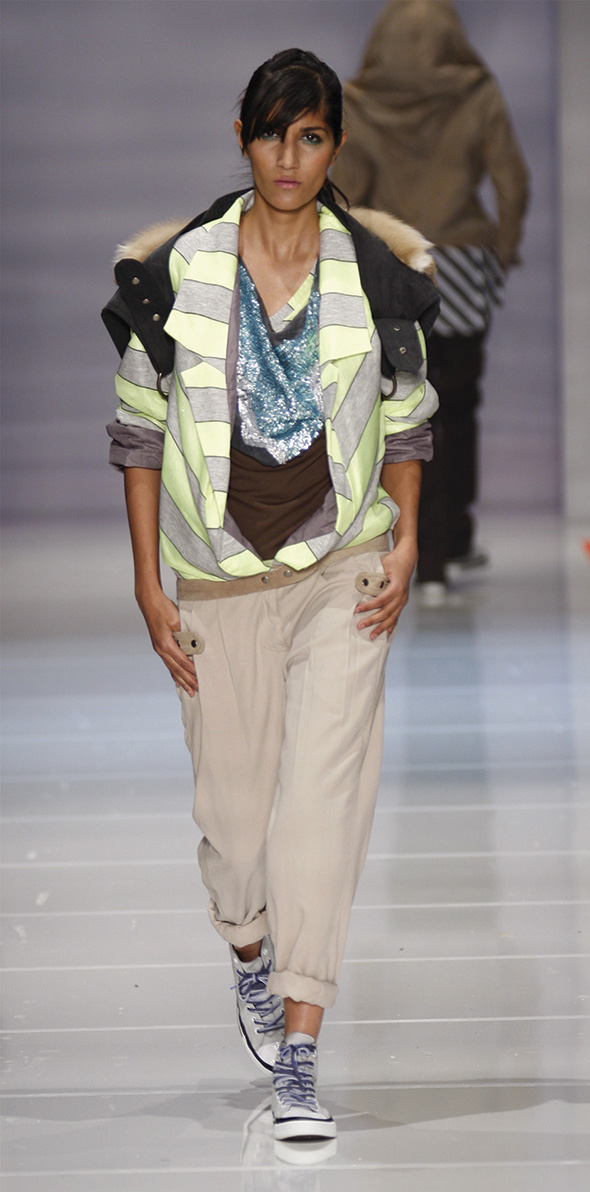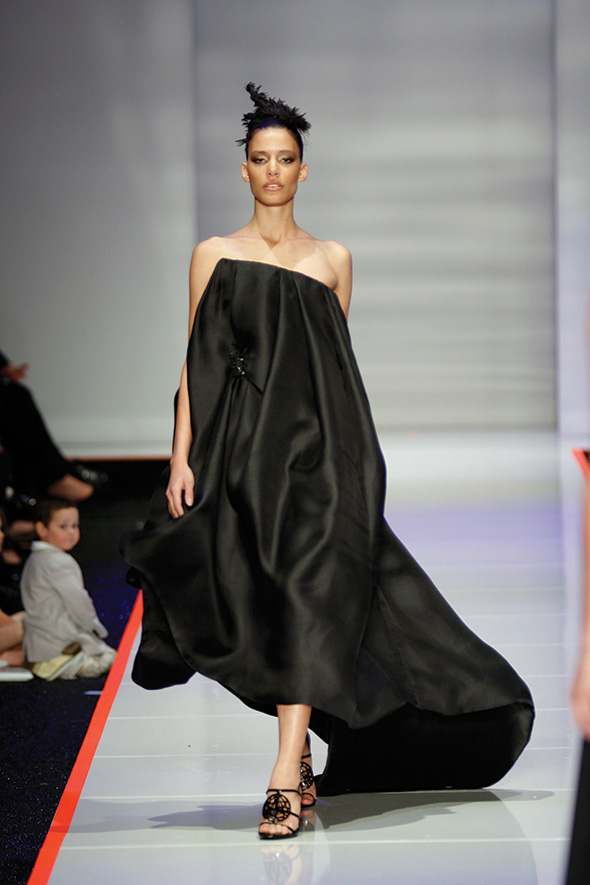If you consider the thousands of fashion design students who graduate each year and the collections they produce at the culmination of their education—it’s a wonder that anyone ever gets noticed. These pending alumni put endless amounts of resources, stitches, time and ambition into their designs with the hope that they will create a halo of attention that will help them pass through the iron doors of the fashion industry. And while the bitter reality is that most graduates are forced to revise childhood dreams and aspirations once out in the real world—Ronnie Escalante Jr., and Sook Yeong Kwon are two Academy of Art successes who are yards ahead of the rest.

Sook Yeong Kwon is a soft-spoken Korean sweetheart who lets her designs do all the intimidating. Her creations introduce androgynous thug to playfully pretty for the confident urban street-stomper. In this funky collection, oversized hoodies meet sequined details and neon stripes contrast with a palette of soft natural shades. Too many disparate elements? That’s the point. “The inspiration for this collection was techno-grunge.” Kwon says, “I wanted to bring punk accents and neon to a base of faded colors. I like bringing totally separate elements together in one piece or collection.”
—Music is a big source of inspiration for you—what music was your muse for this collection?
“Japanese J-pop artist, Fantastic Plastic Machine, has produced some really great albums. Every album has a theme, jazz, etc.—but there is a certain quality that stays consistent despite his genre shifting. He does different things but always on his table, his quality. I am like that as a designer. I listened to a lot of his music while I was doing this collection.”
—How does living in San Francisco influence your designs?
“What I like about SF is that there are so many different aesthetics. Here people enjoy a huge spectrum of styles. I see homeless people on the streets with crazy blankets around them, but then there are also people wearing clean, simple, modern styles. I can see all of these things on the same streets and it broadened my limits. I like the vibe on the street.”
—Got a favorite neighborhood?
“I really like Haight Street. I go to all the second hand stores—they’re like a museum to me. I get inspiration and think about how these pieces were made. I can take them apart and learn from them and mix and match them into my wardrobe.”
—What is one design or trend you wish would go away?
“Crocs! I just don’t get it. I prefer jellies.”
—What’s next for you?
“Right now I’m doing sportswear, but the final goal is to move into more structured and tailored formal design. I want to learn more about function and comfort. Great designs that are functional.”

Ronnie Escalante Jr was frazzled and exhausted when he spoke to SOMA—which is a normal state to be in during the days leading up to New York Fashion Week if you are an industry intern. Escalante is currently interning at Rucci but is already planning his future, which looks like it will include a series of apprenticeships with other fashion greats. While working under fashion design gurus is a traditional approach to getting your own foothold in the industry, Escalante isn’t interested in orthodox paths. He plans to have his own line sooner than later. “People say it takes 20 years to start a fashion line but I’m hoping to cut that time in half. But not too soon, because I still have a lot to learn,” Escalante says. A lot to learn maybe, but already well on his way to polished sophistication with the dark dramatic gowns he created for the Spring 2008 Academy of Art show. In his own words he is “just taking it day by day. But so far, things have been very good.”
—Where did the inspiration for the gowns come from?
It is based on a queen whose husband died and she was left with a whole kingdom. Because the Roman Empire said that no woman could rule she was publically beaten, and her daughters sold into slavery. Originally the collection included plastics by making silicone molds on a mannequin, which were supposed to represent armor, but editing got rid of the plastics, which I replaced with beading.
—What’s the best part of working at Rucci?
It isn’t until you actually see the whole project being done that you understand how much goes into it. Dresses are pieced together by hand and watching that is a pretty big thing. I am amazed at the research that goes into the fabrics—Rucci doesn’t settle for anything less than perfect fabrics, like cashmeres that go for $600 a yard.
—How do you describe your design aesthetic?
Some have told me that it’s a little sexy, but I don’t think so. I just want the woman wearing it to be confident. You shouldn’t have to explain design; it should speak for itself. kiira mancasola

